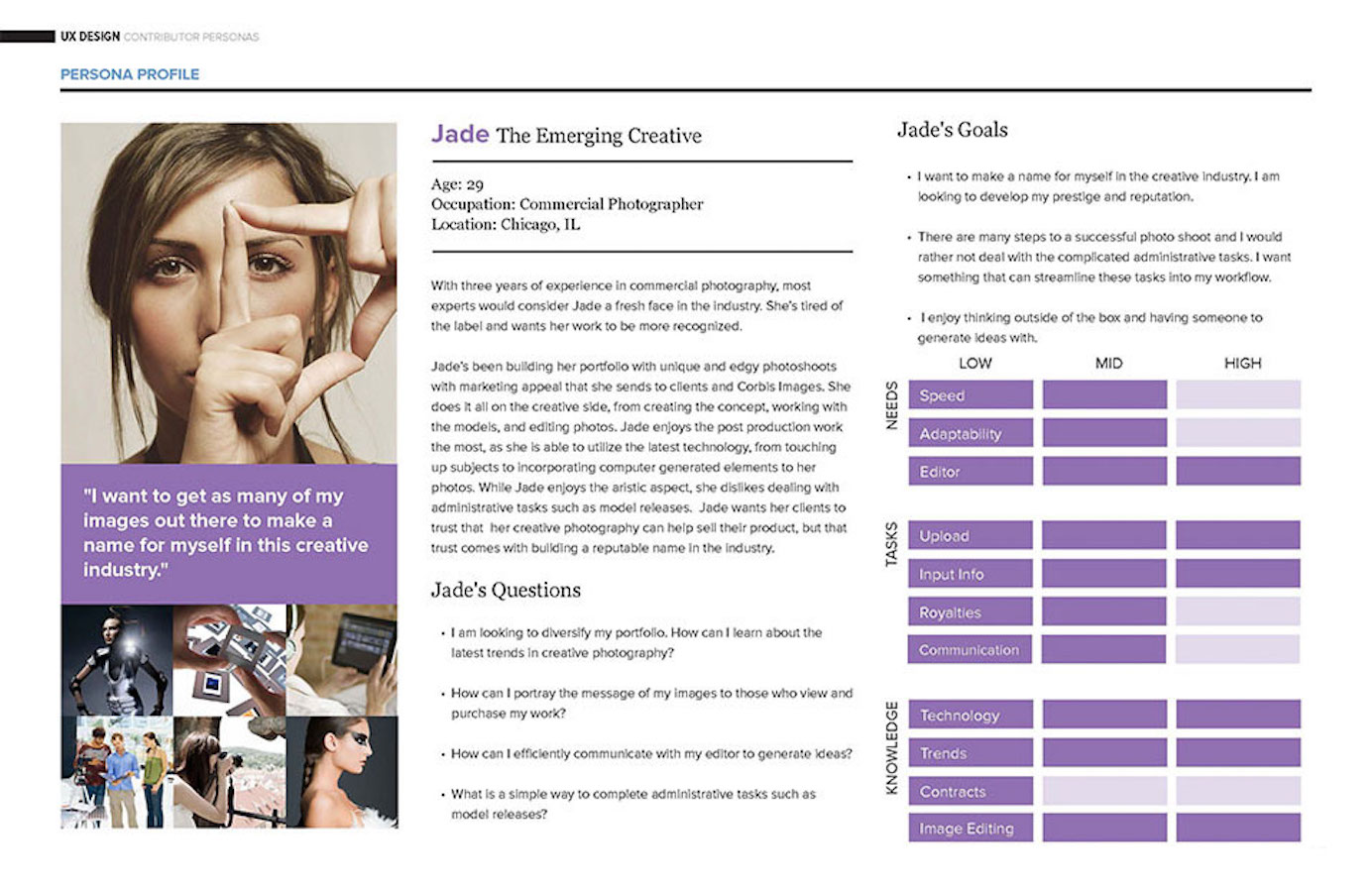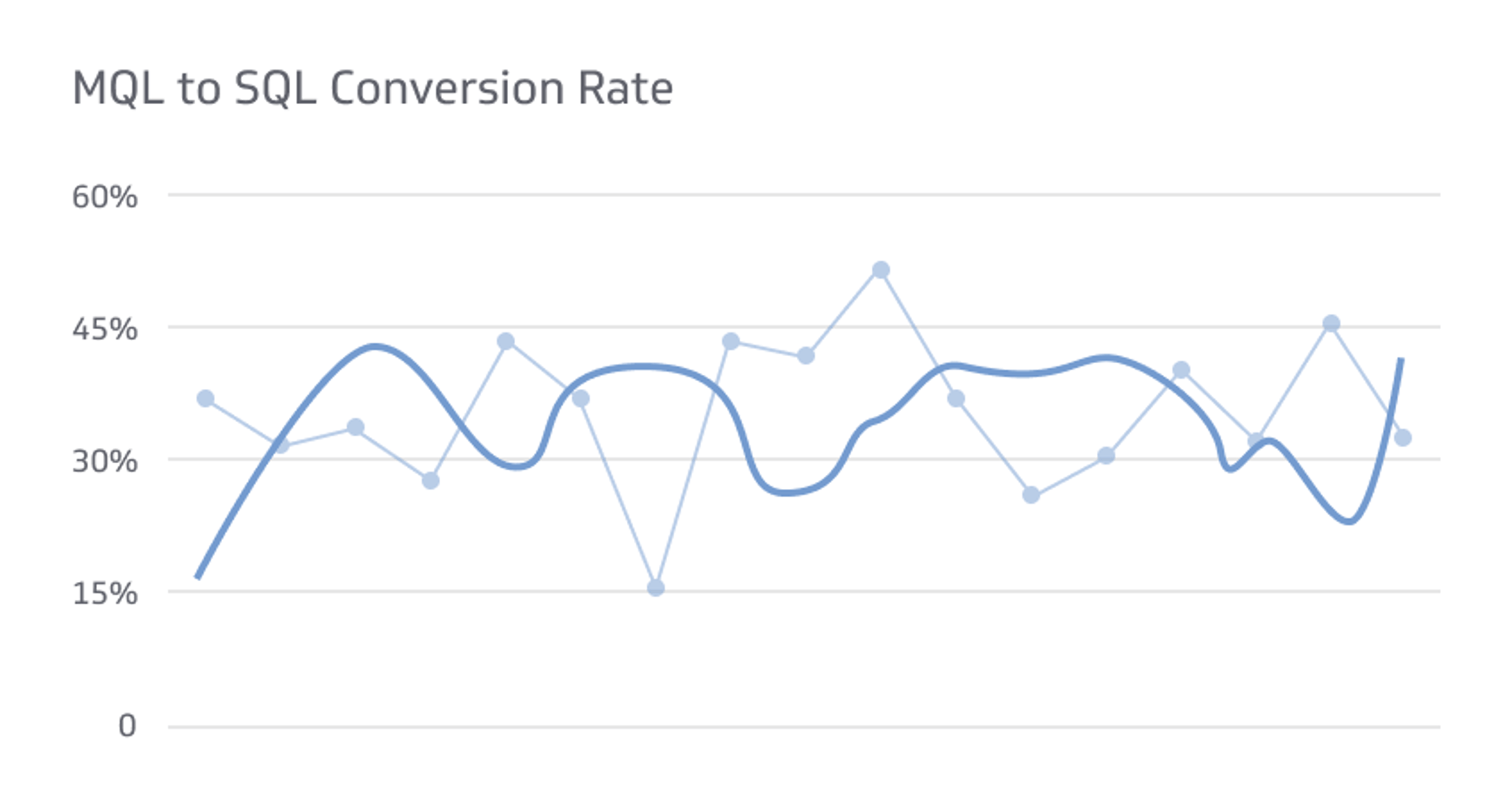Personas are a funny thing. Everyone in marketing knows they're important. We all spend hours painstakingly crafting them, filling in all the delightful details that should transform our buyer archetypes into real, breathing humans. But then something unfortunate happens. We proudly launch our brand-new personas, email them around the company, maybe even create some swanky posters… and then those personas promptly collect dust.
I've built (and abandoned) a lot of personas during my marketing career. I've seen the good, the bad, and the utterly useless. I've come to one resounding conclusion: Most personas are bad. Really bad. They're too generic, too surface-level, and ultimately provide no real guidance when it comes to impactful marketing decisions.
But it doesn't have to be this way. Personas can be incredibly useful tools for your go-to-market strategy. The key is to look past the cookie-cutter templates, ditch the fluffy demographic descriptions, and dive deep into the actual motivations, pain points, and watering holes of your ideal customers.
Let's explore how to build better personas that actually drive results for your SaaS.

Why your existing personas suck (and what to do about it)
Most personas fall victim to these common pitfalls:
They're built on assumptions, not data.
Are your personas grounded in hard research, or just a mishmash of what your sales team thinks is true about your customers?
They're overly focused on irrelevant demographics.
Age range and household income have limited bearing on whether someone buys your SaaS product.
They don't go deep enough.
They focus on surface-level pain points instead of the underlying motivations, fears, and internal debates your buyers face.
They're never actually used.
Most personas end up in a dusty slide deck, forgotten about the moment they're created.
The transformation: from generic personas to precision targeting
So, what sets an effective persona apart from the useless masses? Here's the key shift:
- Bad personas provide a generic sketch.
- Great personas deliver X-ray vision into your buyer's mind.
Think of it like building a sniper rifle vs. a shotgun. Generic personas scatter your messaging everywhere, hoping to hit something by chance. Precision personas allow you to identify your ideal customers with laser focus and tailor your communication specifically to their needs and concerns.
Step 1: Forget what you think you know


The biggest roadblock to effective personas is your own preconceptions. To truly understand your buyers, you need to start with a blank slate. Here's where to gather data that paints a true picture.
Customer interviews: Nothing beats talking to real customers 1:1. Aim for in-depth conversations, not just surface-level surveys.
Sales team insights: Your salespeople are on the front lines. Use their hard-won knowledge to uncover common objections, motivations, and the words customers actually use.
Website analytics and engagement data: What content are people consuming? What are the patterns that lead to conversions?
Support tickets and feedback: Where are customers struggling? What are their unvoiced frustrations?

Step 2: Zero in on the moments that matter

The key to personas isn't to list your buyer's every attribute. It's about honing in on the specific situations and mindsets that make or break a sale. Think of these critical stages:
The “Aha!” moment
What's the problem that makes your ideal customer suddenly realize they need a solution? What triggers their search?
The research phase
Where do they go for information? Who do they trust? What keywords are they searching for?
The tipping point
What's the internal debate that needs to be resolved before they'll buy? What could derail the sale at the last minute?

Step 3: Craft narratives, not bullet points

It's tempting to fill a persona template with a list of facts. But to make these personas resonate, you need to weave them into a story. Here's how to breathe life into your data:
Give your personas real names (and faces, if possible). Instead of “Marketing Manager,” give her a name like “Stressed-Out Sarah.” A real photo helps too!
Craft a micro-story around their biggest challenge. Sarah's story isn't just “needs to drive more leads.” It's that her boss is breathing down her neck, threatening to cut her budget if she doesn't show results by end of the quarter. Can your SaaS solution be Sarah's lifeline?
Use their actual language. Take direct quotes from your interviews and sprinkle them throughout the persona. This makes the narrative feel authentic and relatable.
Focus on internal debates, not external circumstances. “Sarah is a 30-something woman living in the suburbs" is useless. "Sarah feels torn between tried-and-true marketing methods and the pressure to experiment with new channels" is gold.
Example: Putting the “person” in persona
Let's look at a “before” and “after” persona example to see the difference:
Bad persona (Sales Director Sam)
- Age: 40-55
- Location: North America
- Title: Director of Sales/VP of Sales
- Challenges: Hitting sales targets, lead generation, forecasting
Good persona (Stressed-Out Steve)
The situation: Steve's been tasked with doubling revenue in the next 12 months, but his existing sales playbook isn't cutting it. His boss is demanding a detailed, data-driven plan, but Steve's team is scrambling just to keep up with their current targets.
The pain: Steve's worried he's going to miss his targets, get passed over for that promotion, and have to update his LinkedIn profile far sooner than planned. He desperately needs tools and processes to streamline his team's efforts to free up time for strategic growth.
The mental debate: “Do I stick with the familiar methods and risk falling behind, or do I gamble on some new tech I barely understand, which could backfire spectacularly?”
See the difference? “Stressed-Out Steve” gives you a visceral understanding of what's at stake for him – that's what makes him relatable and leads to messaging that cuts through the noise.

Step 4: Turn personas into your marketing superpower

Personas are only useful if you use them. Here's how to make them a core part of your marketing toolkit:
- Reframe your content strategy: What blog posts would ease Stressed-Out Steve's biggest worries? What case studies would showcase how your SaaS is the answer to his prayers?
- Targeted campaigns and messaging: Can you run ads that directly address your personas' specific pain points or use their own language for maximum impact?
- Objection busting: Anticipate the roadblocks in the buyer's mind and proactively address them in your website copy, sales materials, and even your FAQ page.
- Training new hires: Personas are the fastest way to get new team members up to speed on exactly who they should be talking to (and how).
The bottom line is: Personas should make your job easier!
If creating personas feels like a chore that provides little return, you're doing it wrong. Great personas should simplify your marketing efforts, allowing you to focus on crafting messages that hit your ideal customers square in the gut.
Don't settle for generic marketing fluff. Invest the time in uncovering the true stories behind your customers, and you'll reap the rewards with a targeted marketing approach that drives real, sustainable growth for your SaaS.
FAQ
1. My existing personas have some useful information. Do I really need to start from scratch?
Not necessarily. If your personas have some nuggets of accurate customer data, you can use them as a starting point. However, be critical of any information based on assumptions rather than research. Focus on expanding those basic data points into richer narratives, unearthing the motivations and mindsets behind the surface-level information you might already have.
2. Customer interviews sound time-consuming. Can't I just use surveys instead?
While surveys can be useful for gathering general data, they lack the nuance you get from 1-on-1 conversations. Interviews allow you to ask follow-up questions, dig deeper into unexpected answers, and observe a customer's tone of voice and body language, which reveal underlying emotions. Aim for in-depth interviews with at least a few customers; even short conversations can yield valuable insights.
3. How many personas should I create?
There's no magic number. Focus on quality over quantity. It's better to have 2-3 well-developed, highly specific personas than a sprawling collection of generic ones. Start with the customer segments most crucial to your SaaS agency's success and expand from there as needed.
4. My SaaS product appeals to a pretty wide range of businesses. How do I keep my personas from getting too broad?
Even within a broad target market, there will be variations in pain points, goals, and decision-making processes. Consider focusing on specific company sizes, industries, or roles within the organization. For example, instead of "Marketing Manager," you might have personas like "Marketing Manager at Mid-Size Tech Startups" and "Marketing Manager at Enterprise Healthcare Companies."
5. How often should I be updating my personas?
Your personas should be considered living documents. Revisit them at least annually, and any time you notice major shifts in your market, ideal customer profile, or product offerings. Even small updates can keep your personas fresh and relevant.
6. You mention using customer quotes. How do I get those ethically?
During customer interviews, always ask for permission to use their words later in marketing materials. Be upfront about how their quotes might be used (anonymously or with attribution) and whether they'd like to review the final content. Transparency is key!
7. How do I actually use personas to write better blog posts?
Put yourself in your persona's shoes. What are their top 3 questions about a topic? What are they secretly afraid to ask? Structure your blog posts to directly address those questions and concerns. Use the language they use, anticipate their objections, and provide solutions tailored directly to their needs.
8. Beyond content, where else can personas be helpful?
- Sales enablement: Equip your sales team with persona-specific talking points, objection handling scripts, and case studies that resonate.
- Product development: Identify features and pain points most critical to your target buyers.
- Paid advertising: Craft ad copy, targeting, and even visuals that align with specific persona segments.
9. Are there any good persona examples I can look at for inspiration?
Absolutely! While you never want to copy someone else's personas directly, here are a few resources:
- HubSpot's Blog: They often share detailed breakdowns of their own persona creation process.
- Adele Revella's Buyer Persona Institute: https://www.buyerpersona.com/
- Individual company blogs: Search for "[Industry] Buyer Persona Examples" to find niche inspiration.
10. I'm ready to dive in, but it all feels a bit overwhelming. Any tips for getting started?
Start small! Choose one existing persona to revamp or focus on a single customer segment. Break the process into manageable chunks: dedicate one week to interviews, another to analyzing data, and so on. Even incremental progress is better than staying stuck with ineffective personas.






